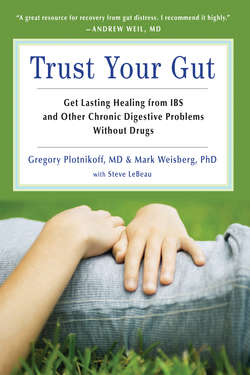Читать книгу Trust Your Gut - Gregory Plotnikoff - Страница 46
На сайте Литреса книга снята с продажи.
Nancy's Unfortunate Appetizer
ОглавлениеNancy was sensitive to many foods because they caused gut distress. She tried to stay vigilant about only eating foods on her safe list. One night at a party, she ate an appetizer that looked appealing to her. Five minutes later, she started to feel queasy and mildly bloated in her mid-abdomen. Being so concerned about her diet, she felt a surge of adrenaline and a feeling of anxiety.
She thought, Oh no, what if I ate something my gut can't tolerate? What happens if I have sudden diarrhea at this party and I get embarrassed? As she worried, she felt her lower abdomen start to cramp and the queasiness increase. As her anxiety intensified and her heart rate jumped, she urgently scanned the apartment to find the bathroom. Her emotions and her physiology were intertwined. Nancy's body and mind joined in an intimate yet painful dance.
Although our culture tends to separate the mental and emotional from the physical, our brain does not. Scientists define pain as both a sensory and emotional experience. Why? Pain signals enter our brain, where they channel through a sensory input center (the thalamus) and then are immediately evaluated by another brain structure (the amygdala) for emotional value and threat potential. Depending on this instantaneous evaluation, big physical changes can affect nerves, muscles, connective tissue, and even our immune system. Lo and behold, aching, bloating, or spasms arise in the gut.
